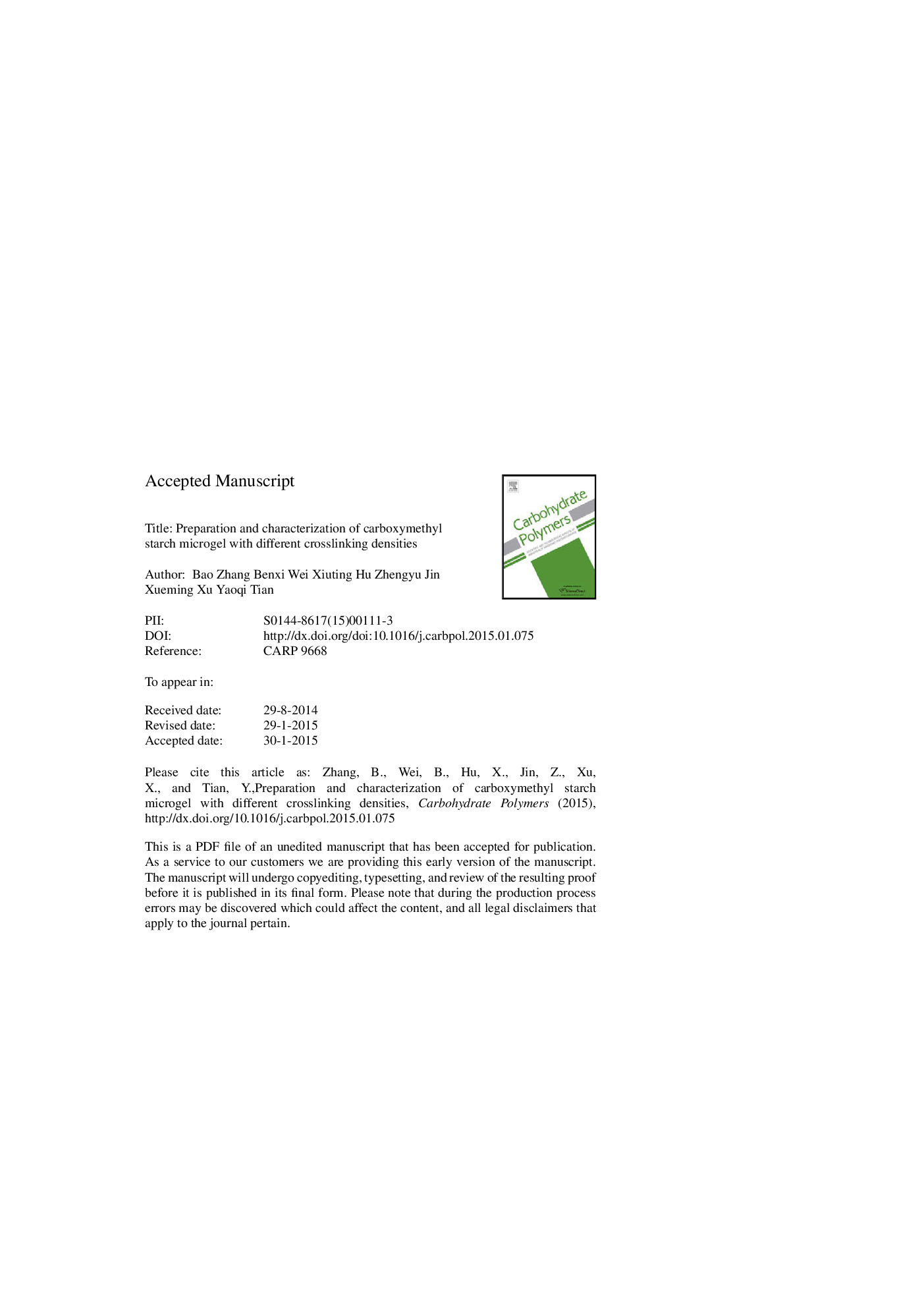| Article ID | Journal | Published Year | Pages | File Type |
|---|---|---|---|---|
| 7788892 | Carbohydrate Polymers | 2015 | 38 Pages |
Abstract
Microgels synthesized with different crosslinking densities were characterized by Fourier transform infrared (FT-IR) spectroscopy, thermogravimetry analysis (TGA), swelling, and rheological analyses. The lysozyme uptake capacity of these microgels was evaluated through the effects of lysozyme concentration, pH, and ionic strength. The microgel particle size mostly ranged within 25 μm to 45 μm. FT-IR analysis results suggested that sodium trimetaphosphate reacted with the hydroxyl groups of carboxymethyl starch (CMS), thereby forming ester linkages. TGA data indicated that crosslinking increased the thermal stability of CMS. Swelling degree increased with increasing pH before pH 5, and then remained almost constant. However, swelling degree decreased with increasing ionic strength and crosslinking density. The microgels behaved as viscoelastic solids because the storage modulus was higher than the loss modulus over the entire frequency range of dispersions with polymer concentrations of 3% (W/W) at 25 °C. The data for the uptake of lysozyme by microgels demonstrated that the protein uptake increased with increasing pH and lysozyme concentration, as well as with decreasing ionic strength and crosslinking density. The lysozyme-microgels complex was identified by CLSM, and the distribution of lysozyme in microgels with low crosslinking density was rather homogeneous.
Keywords
Related Topics
Physical Sciences and Engineering
Chemistry
Organic Chemistry
Authors
Bao Zhang, Benxi Wei, Xiuting Hu, Zhengyu Jin, Xueming Xu, Yaoqi Tian,
